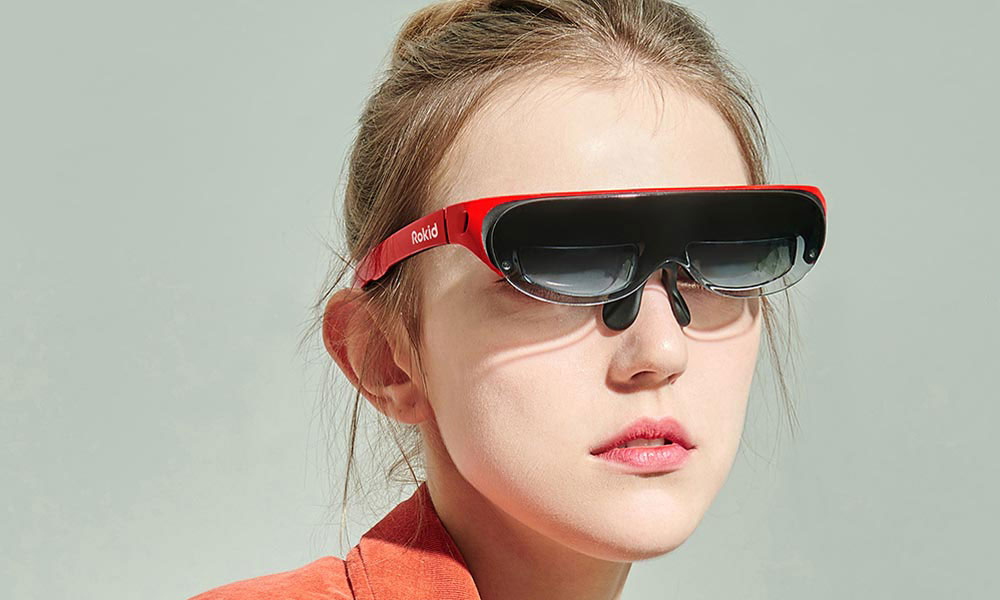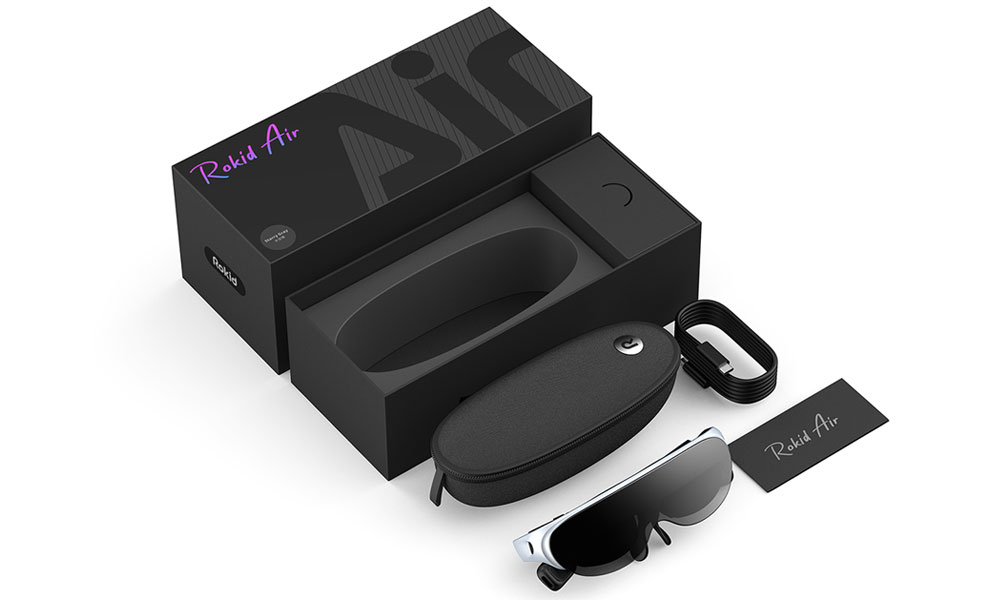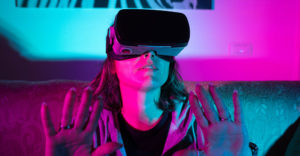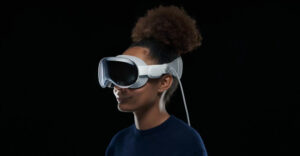I grew up with stories like Robert A. Heinlein’s “Have Spacesuit—Will Travel” and the idea that we will someday get on a space liner to view the stars. But these stories were written long before we understood the time it would take to make these trips possible, the adverse impact of space travel on humans, and the unbelievable costs that would be incurred.
Last week I was on a panel for the World Talent Economy Forum talking about this, after which I concluded that putting people in space has made little sense for some time.
The first astronauts, while well trained pilots, were basically just passengers on a ballistic effort designed to make the Soviets look bad (and in retaliation for them making us look bad with Sputnik). Although we are advancing space capability over time, we are advancing AI and Robotics far more quickly and, by 2050 we should be able to field autonomous robots that can perform as well or better than people in hostile environments like space, making putting people at risk for space flight largely a thing of the past.
Let’s talk about space travel this week — and we’ll close with my product of the week: a new set of AR glasses that could mean the beginning of the end for smartphones as we know them.
Commercialization of Travel: Earth vs. Space
Often, when arguing for the commercialization of space, we go back to how we developed land, sea, and eventually air travel. But we seem to forget there were not only real near-term reasons (trade, living room, independence) for commercializing travel, every place we traveled we could generally live. In our immediate vicinity, only Earth is compatible to human life.
If you remember either the “Terminator” or “Alien” movies, both had androids that could outperform humans. In fact, why weren’t the marines in the second installment of the “Alien” franchise battle droids rather than humans in armor? Even the android they had, for what was a military ship, seemed unusually weak yet it was still more powerful than an average human.
The entire mission could have been handled by embedded AI and armored robots that, even if they failed, were in no danger of dying because they were never alive. Granted it wouldn’t have been as good of a movie to watch but we currently have robots patrolling U.S. borders.
We can design and build a robotic system that will better survive the hostile nature of space and provide a far safer way to explore or industrialize space than humans.
Building a Space Economy
The near-term advantages in space aren’t tourist travel because there is really no place to go yet. Even if we built a space hotel, the cost of heavy lifting all that material into orbit would result in the combination of relatively small living space coupled with very high costs related to both what was built and maintaining it.
Add to this the massive amount of space junk, meteors, and micro-meteors which would make the endeavor risky even before looping in the risk of DNA and bone damage, and you get what for many who could afford the trip a nightmare vacation.
Granted there may be a small group of very rich folks that would try this out. Still, the best chance to make this work would be to first develop space mining and manufacturing — then build the space hotel — because then you could more affordably build someplace the very rich might want to go.
The initial commercialization of space will most likely be a mining/manufacturing effort that will largely use automated spacecraft and robots to do the job far more safely, and at a larger scale than humans are able, because robots are safer and more efficient than humans when working in very hostile environments.
A space station would be more like an airport for interstellar travel than a hotel and only be viable in that last role if we either develop suspended animation or faster-than-light travel.
While we are developing those things, we are also exploring better man/machine interfaces and ways to upload the human mind. If we can upload you, then the concept of suspended animation becomes viable because we can simply use a large enough repository of non-volatile memory to house your personality and then download it into a body designed for where you are going once you get there.
We May Not Want To Be Space Tourists
Long before we might get humans into space for extended tourist travel, we could create simulations in the metaverse that could put us believably in any world, real or imagined, without leaving home. It’s likely that long before we can successfully upload humans, we should be able to tie into our nervous systems and fool our minds into thinking we are someplace else.
Even more near term we could use advanced VR headsets and isolation pods to make it feel like we’re in space or in another world. We could build hotels on earth with LED walls that looked and felt like a space station but without the related risks, including motion sickness.
If you wanted to make the experience more real, you could tie those LED panels to high-definition cameras on a satellite that broadcasts in real-time, and because the view isn’t interactive, latency wouldn’t degrade the experience.
Imagine being tied real-time into a 360-degree camera placed on the spaceship’s nose to make you feel like you were a superhero flying into space (you wouldn’t even have the distraction of windows).
Compared to the current $250K cost for a very short trip, your cost might even be free if you agree to see a sales presentation, or more like an amusement park ride if you didn’t since you could spread the cost of the flight across millions of virtual passengers.
Ask yourself this: Would you rather spend $250K for a short one-time trip to space and one week of training, or $250 for a much longer experience with virtually no safety risk and what will likely be a much better view of far more of the universe?
Wrapping Up
Space tourism makes no near-term sense at scale.
Right now, people are flying into space for status, publicity, and perhaps the chance to meet some very powerful people. But this isn’t sustainable until we make this type of travel far safer, far more affordable, and have destinations that people will enjoy.
Long before that, we’ll have developed alternatives that will provide a much safer and more enjoyable way to get a similar experience, and at some point, we’ll develop a way to alter ourselves so that we can function in the accessible environments close to us that are currently very hostile to human life.
Even then, initially, the efforts will be more connected to exploration and industrialization of space than to travel because there just aren’t any attractive places to visit close to Earth. Only if that last element changes will space tourism become a thing and, by then, we may simply choose to travel virtually like many of us are doing today during the pandemic.

Rokid Air 4K AR Glasses
I’m convinced that eventually, rather than having to look at a smartphone or laptop monitor, we’ll use head-mounted displays that allow us to have a big screen experience without having to buy a huge monitor or TV.
Initially, these displays are mostly focused on entertainment, but they have advantages to privacy and a better balance between mobility and performance than we currently get with laptop or smartphone displays.
Now while Rokid calls these AR glasses, they really aren’t, at least not how they are currently implemented. AR glasses take virtual objects and place them visually inline with what is around you.
A head mounted display takes what would be on a monitor and places that in the display with high occlusion so that you can’t easily see through the projection. These glasses are good at the latter but initially they appear to work more like a display than AR glasses due to the lack of a VR app that can yet use them.

The Rokid Air head mounted display is the best I’ve tested so far, and significantly exceeds the performance of the first head-mounted display I tested from Sony. That display, focused on the telemedicine market, cost over $20K and caused a flight attendant to ask me if I worked for the CIA.
What made the Sony stand out was, for the time, its great resolution and adjustable occlusion that allowed you to choose to see through the image at what was around you, or not.
In contrast, the Rokid Air looks a lot like dark glasses, and the head mounted display:
- Produces an 1,800-nit image (which will work outdoors) that is high definition with 1920/108 resolution for each eye (you can adjust each lens so you shouldn’t need to wear glasses);
- has a 60Hz refresh (good for everything but high-speed gaming), built-in speakers and a noise-cancelling microphone;
- connects to Android and Apple phones that are current (Android 10 or iOS 11 or later that have USB-C Display Port and OTG support) and most current game consoles via an HDMI adapter;
- has multiple sensors that could be used in the future for more of a VR experience; and
- it weighs just 83 grams.
Oh, and it also has decent contrast at 100,000 to 1, and it pulls power over the link, so it doesn’t need batteries.
In use, it works like an external monitor for your phone. Without the app (which you must sideload), the glasses show what’s on your screen. With the app, the phone turns into a huge mouse pad and only the glasses show the content. The built-in speakers aren’t bad if you are alone but will be annoying to anyone near you, but you can use earbuds or headphones the same as you might while using your phone.
I was able to read a book, watch movies and TV, and the voice command feature was very helpful. However, doing something like email on the smartphone, while doable, wasn’t ideal because I needed to see my hands while typing to hit the right letters. You can do it, but the experience is like wearing aggressive bifocal glasses and was not, at least for me, comfortable.

Ideally, the glasses are best for watching videos privately. I watched programs on a variety of services. I initially had compatibility issues with both Netflix and Amazon but that cleared when I rebooted the phone or just clicked through the alert. Once they worked, they continued to function without a problem. My guess is the services are a bit leery of external displays on phones.
The one place I’m looking forward to using these glasses is in the dentist’s office while having my teeth cleaned because I’m tired of counting the dots on the ceiling and being on the wrong side of a one-way conversation.
Rokid Air 4K AR Glasses price out on IndieGoGo at $499, but they have two specials on that service at the time of this writing. At $499 these are a lot more affordable than those old $20K glasses I tested from Sony. The Rokid Air 4K AR Glasses are the best I’ve tested so far — and my product of the week























































